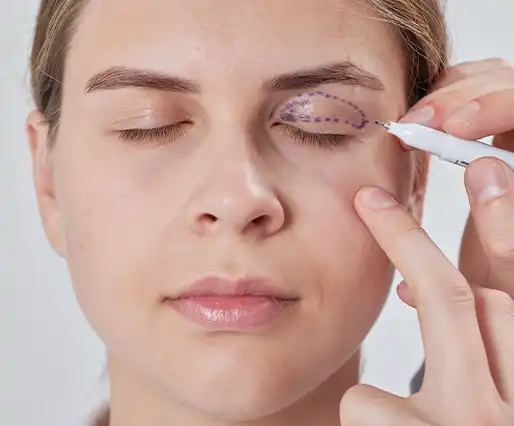Undergoing eyelid surgery is a transformative experience—but what happens after the procedure is just as important as the surgery itself. If you're considering blepharoplasty in Riyadh (جراحة رأب الجفن في الرياض) , understanding the recovery timeline can help you prepare both mentally and physically. While each patient heals differently, there is a general week-by-week guide that outlines what you can expect during the post-operative period.
From initial swelling to the final, refined results, this article provides a clear breakdown of how your eyes will recover and when you’ll start seeing the full benefits of your surgery.
Immediately After Surgery: The First 24–48 Hours:
The first two days after blepharoplasty are the most intense in terms of discomfort and swelling. It’s important to rest and follow your surgeon’s instructions closely.
Key expectations in the first 48 hours:
- Swelling and bruising around the eyes
- Mild discomfort or tightness in the eyelids
- Sensitivity to light and blurred vision
- Watery eyes or mild dryness
- Sutures or steri-strips in place
Recovery tips:
- Apply cold compresses as directed
- Keep your head elevated, even while sleeping
- Take prescribed pain medication if necessary
- Avoid any eye-straining activities such as reading or screen time
Week 1: Initial Healing and Visible Swelling:
The first week is the most visually obvious part of the healing process. Expect puffiness, bruising, and tightness, but these symptoms begin to ease with time.
What happens during week 1:
- Bruising peaks around day 2–3 and begins fading by day 5
- Swelling is still present but gradually improving
- Sutures are usually removed around day 5–7
- Mild itching or tightness as the skin begins to heal
What you should do:
- Avoid bending over or heavy lifting
- Refrain from using makeup or skincare around the eyes
- Wear dark sunglasses to protect the area if you go outside
- Follow all medication and cleaning routines provided by your surgeon
Week 2: Reduced Swelling and Return to Light Activities:
By the second week, most patients notice a significant reduction in swelling and can begin resuming light social activities.
Common improvements in week 2:
- Bruising nearly gone or easily covered with makeup
- Swelling continues to go down
- Discomfort greatly reduced
- Visible incisions start blending with natural skin tone
What you can do:
- Resume light office work or virtual meetings
- Start using gentle eye products if approved by your surgeon
- Wear makeup to camouflage residual discoloration
- Avoid exercise and sun exposure until cleared
Week 3–4: Refinement and Subtle Results Start to Show:
By the third and fourth week, your results will begin to appear more natural, and most people feel comfortable returning fully to normal routines.
What to expect during weeks 3–4:
- Swelling and puffiness mostly gone
- Eyes look brighter, more defined, and less tired
- Scars are healing and becoming less noticeable
- Skin texture around the eyelids begins to normalize
What you can do:
- Resume moderate exercise with caution
- Use sunscreen around the eyes daily
- Avoid harsh skincare or treatments in the eye area
- Continue to protect eyes from wind, sun, and dust
Week 5–6: Back to Normal:
By now, most people feel completely recovered and are enjoying the results of their blepharoplasty. Any remaining swelling is usually subtle and unnoticeable to others.
Key outcomes by week 6:
- Full return to daily life, including fitness routines
- Results look natural and well-integrated into facial features
- Incisions are barely visible or hidden in natural creases
- Confidence in appearance typically improves significantly
If you've had blepharoplasty in Riyadh, your follow-up appointments during this period help ensure your recovery is on track and allow your surgeon to monitor final healing progress.
2–3 Months Post-Surgery: Final Results Settle In:
While visible healing may seem complete by the six-week mark, subtle internal healing continues for a few months.
Final recovery notes:
- Residual swelling fully resolves
- Scar tissue continues to fade and soften
- Final eyelid shape becomes fully refined
- You can undergo complementary treatments if desired (e.g., Botox, fillers)
This is when most patients begin to see the “final version” of their blepharoplasty outcome—and the results can be truly transformative.
Tips to Support a Smooth Recovery:
In addition to following your surgeon’s instructions, there are several ways you can help speed up healing and minimize risks.
Best practices during your recovery:
- Stay hydrated and maintain a healthy diet
- Avoid smoking and alcohol, as they slow down healing
- Sleep on your back with elevated pillows
- Avoid rubbing or touching your eyes unnecessarily
- Stay consistent with post-op care and medications
Your body needs time to recover, and gentle care during this process leads to better results in the long run.
When to Contact Your Surgeon:
While complications are rare, it’s important to know when something may require medical attention.
Contact your doctor immediately if you notice:
- Sharp, persistent pain unrelieved by medication
- Excessive bleeding or oozing from incisions
- Sudden vision changes or double vision
- Signs of infection (fever, redness, warmth)
Surgeons who specialize in blepharoplasty in Riyadh typically offer detailed follow-up care and remain available for any concerns throughout the recovery process.
Final Thoughts:
Understanding the recovery timeline helps you set realistic expectations and plan your schedule accordingly. While blepharoplasty offers quick visual improvements, the best results are seen gradually over weeks. By staying patient and following proper care, you’ll enjoy long-lasting, natural-looking results that leave your eyes brighter, more youthful, and refreshed.
Whether you're undergoing upper, lower, or combined eyelid surgery, recovery is a manageable journey—especially with expert guidance and care available for blepharoplasty in Riyadh.

